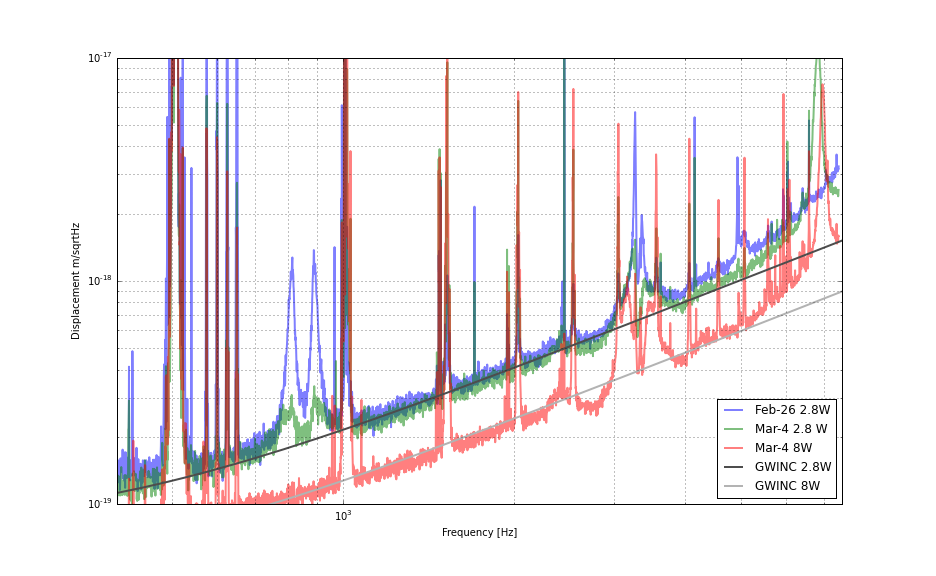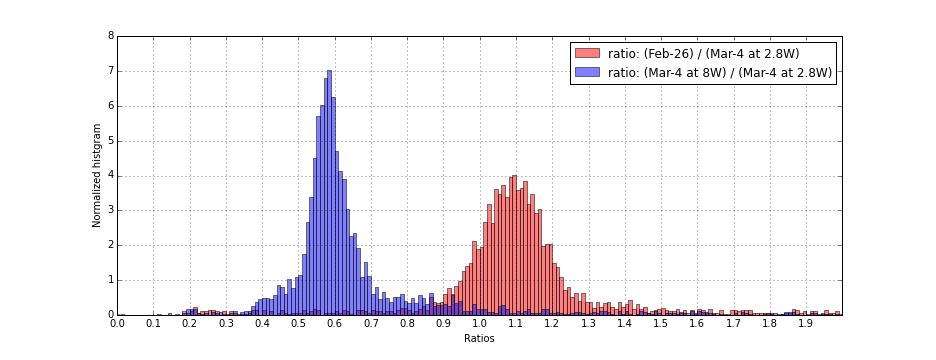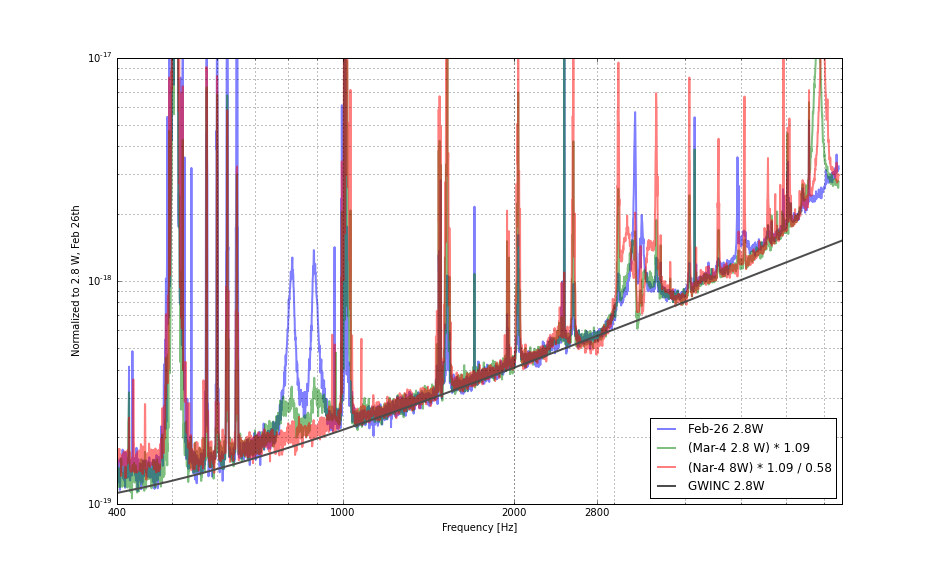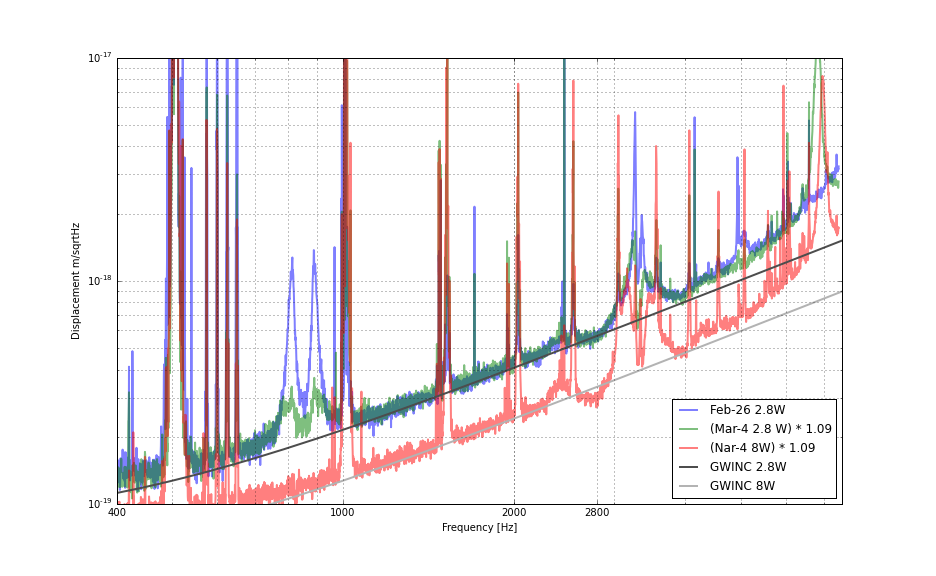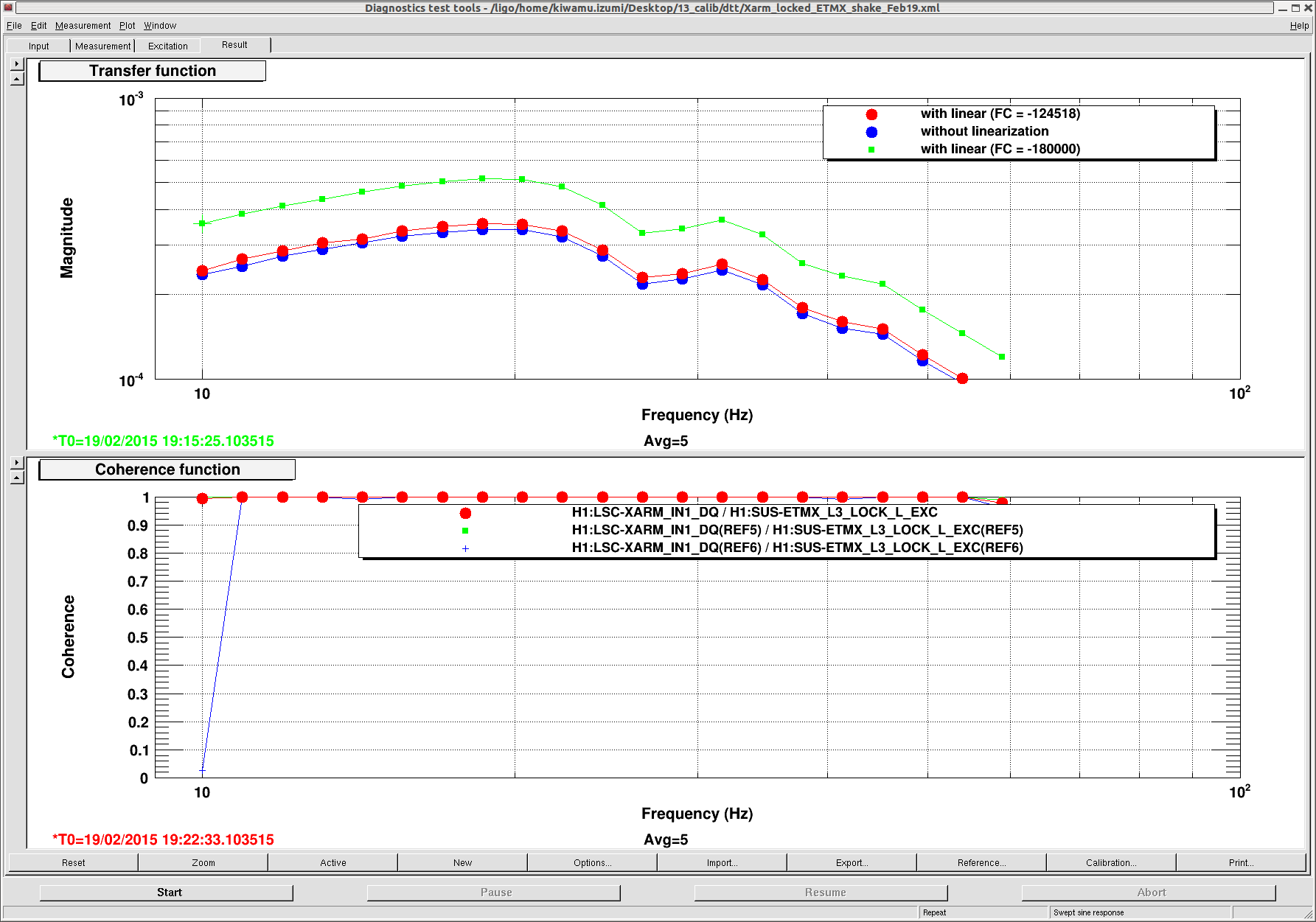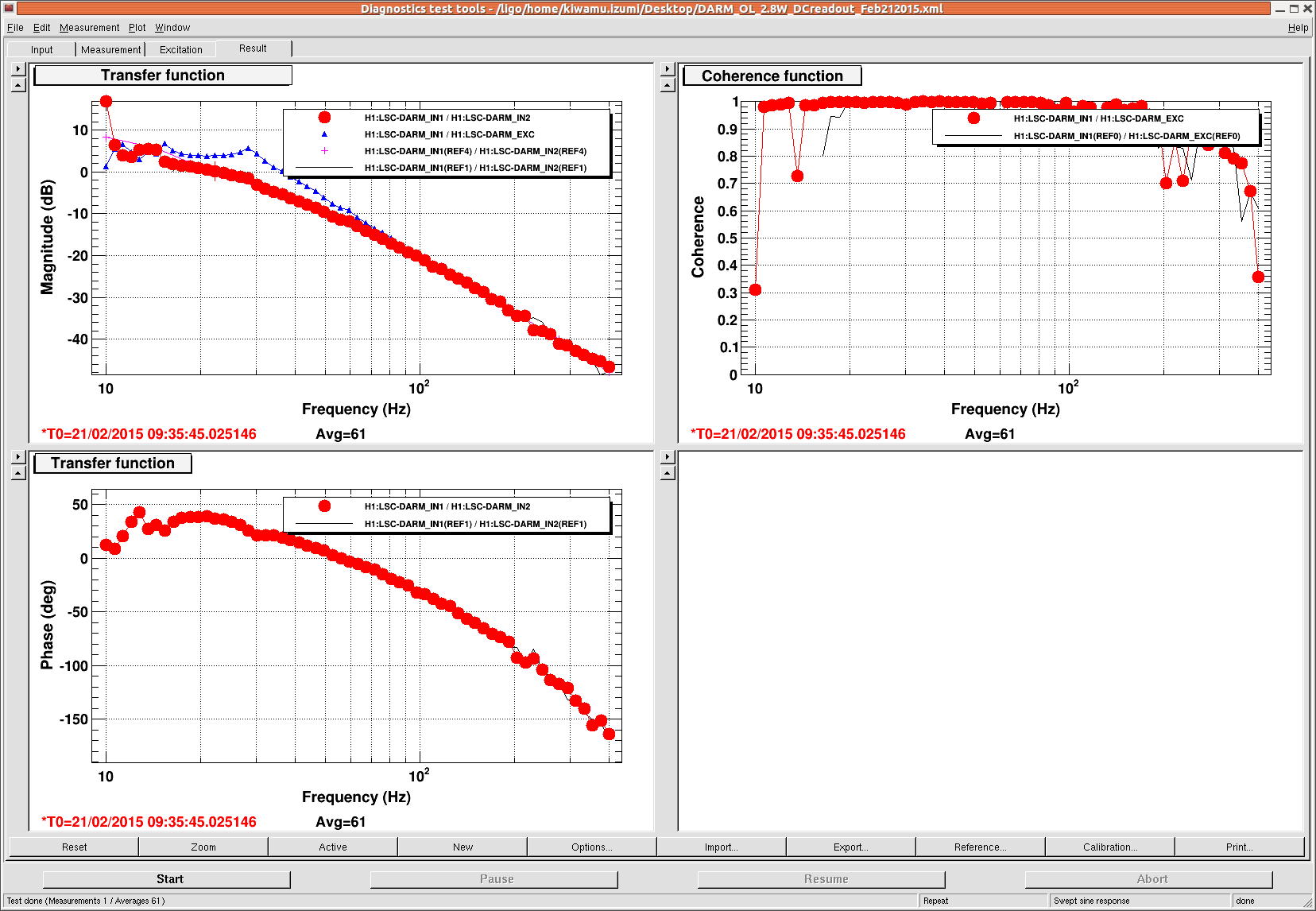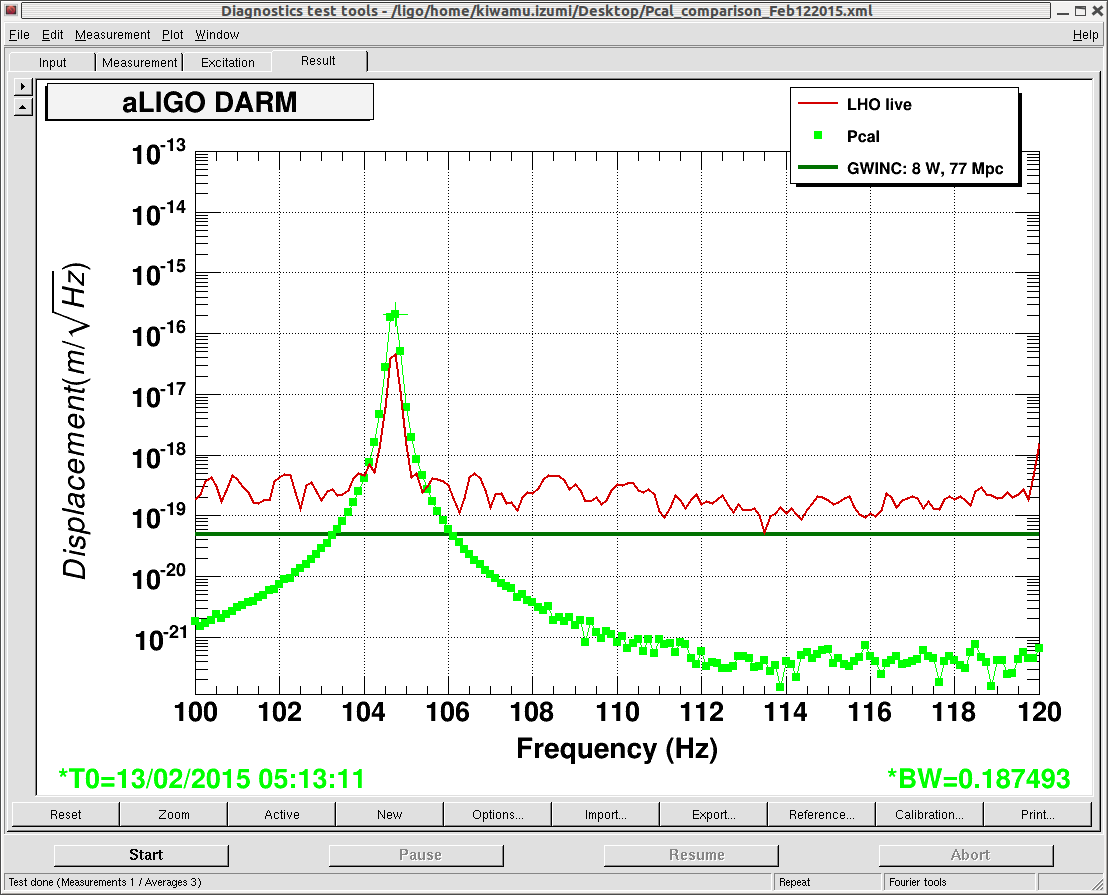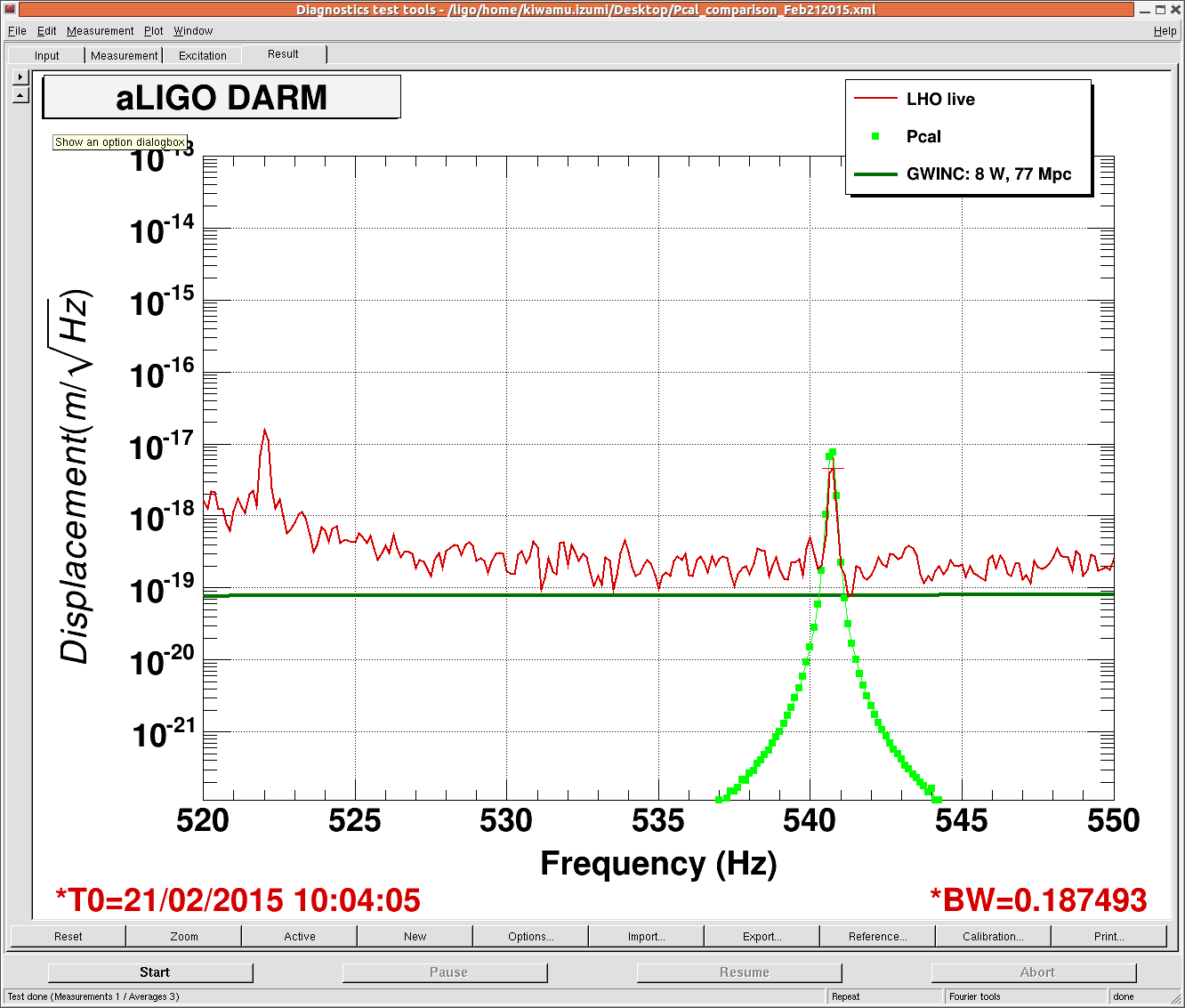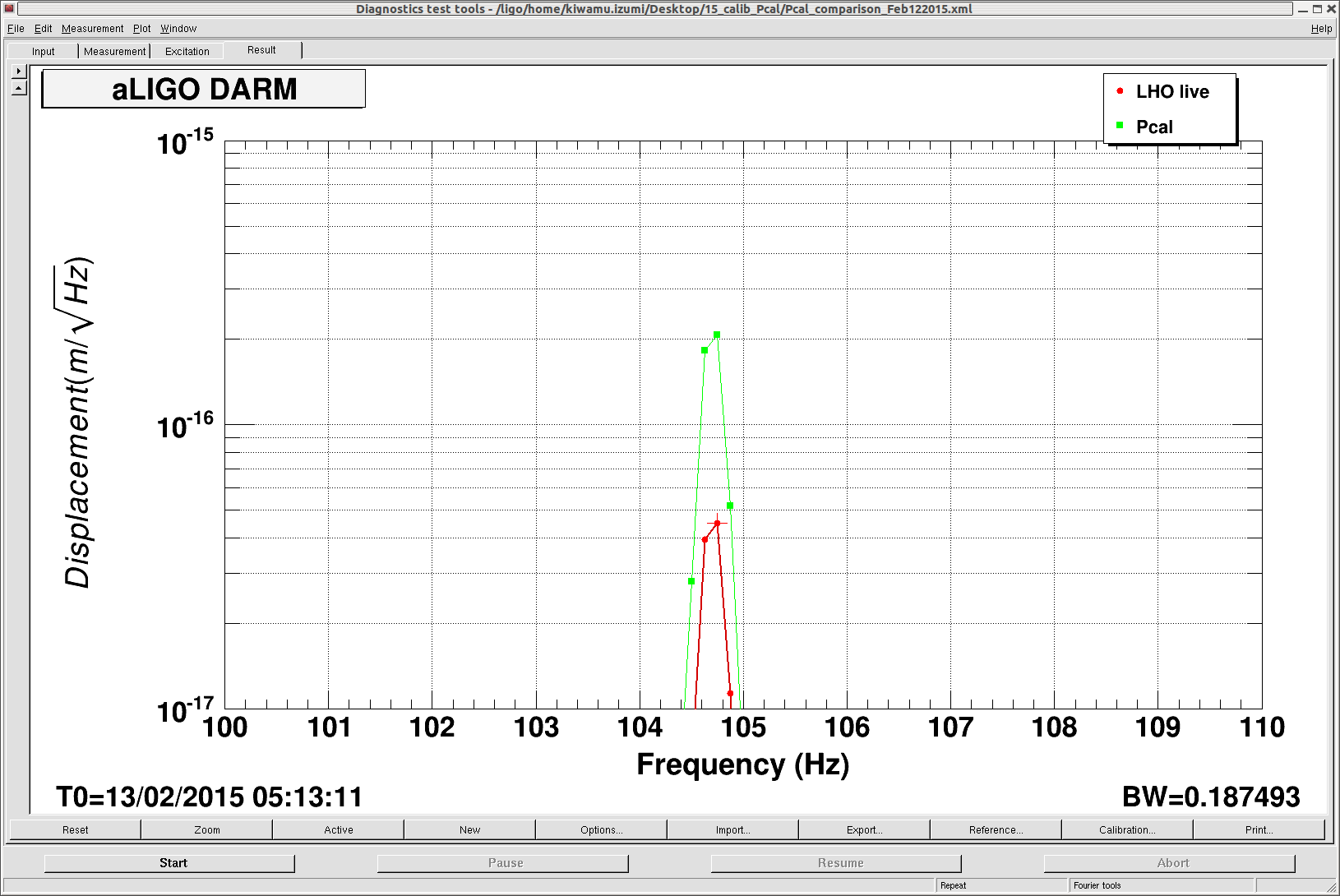Gabriele, Elli, Dan, Sheila
Today we worked on ASC for DRMI + arms off resonance.
-
Changes to input matrix-
- Gabriele made a nice script that measures the sensing matrix. (alog 17085 )
- Previously we had simply copied the input matrix that livingston used, which was close enough to let us close several loops, but clearly was not the best choice of signals for us.
- Based on the measured sensing matrix we changed our input matrix so that we are using REFL A 9I for PR2 and POP A for PRM. Both of these choices seem like clear improvements over what we did in alog 17028, with about 20 times more signal in POP A than POP B for PRM.
-
Higher bandwidth PRC loops
- both PRC1+PRC2 loops were ridiculusly slow in our first attempt at these loops. We have added pairs of poles at 0.3 Hz to each of these loops, which allow us to increase the gain to have UGFs of around 100 mHz. PRC1 is still slower that PRC2. This helped make the AS_C signal seem more sensible, before it seemed to be contaminated by PRC fluctuations.
- We also moved gains into filter modules, screen shot of all of these changes attached.
- After these changes we were able to close the PRC1, PRC2, MICH, and INP1 loops several times and at first things seemed to be better. We were engaging BS first, then IM4, then PR2, and PRM last.
-
demod phase of AS 36 WFS is very sensitive to SR2 alingment
- we then ran into trouble, and found that we weren't able to engage the BS WFS (they would come on and reduce the sideband build ups.) We redid the initial alingment, but this was still true. The BS WFS had seemed reliable since the rephasing described in 17005,
- Gabriele rephased AS36 B carefully, quadrant by quadrant, to minimize the SRM signal seen in the Q phase. After this we saw that there is still an offset between the WFS signal zero and a good buildup in DRMI.
- We moved SR2 by ~4 urad, and saw that the carefull phasing we had just done was wrong by 70-90 degrees. We also see that we can mode hop by moving SR2 by a couple of microradians, even though based on the DRMI build ups we seem to be in a good alignment tonight.
- It could be that servoing to AS_C could help this problem, but we need to think about how to set the centering onto AS_C to accomplish this, since the method Elli and I used was not precise to the level of a micro radian (17085. )
In the past we weren't able to increase enough the bandwidth of the PRC2 loop. It was limited at maybe a maximum of ~10 mHz.
Looking at the model of the pitch and yaw actuators, it turns out that the limit is the first resonance at 1 Hz, which pops above the unity gain and make the loop unstable.
This can be easily solved if we add a double real pole at 300 mHz in the compensator, as shown in the attached sisotool design. In this way the UGF can be increased to 100 mHz, with good phase margin.



